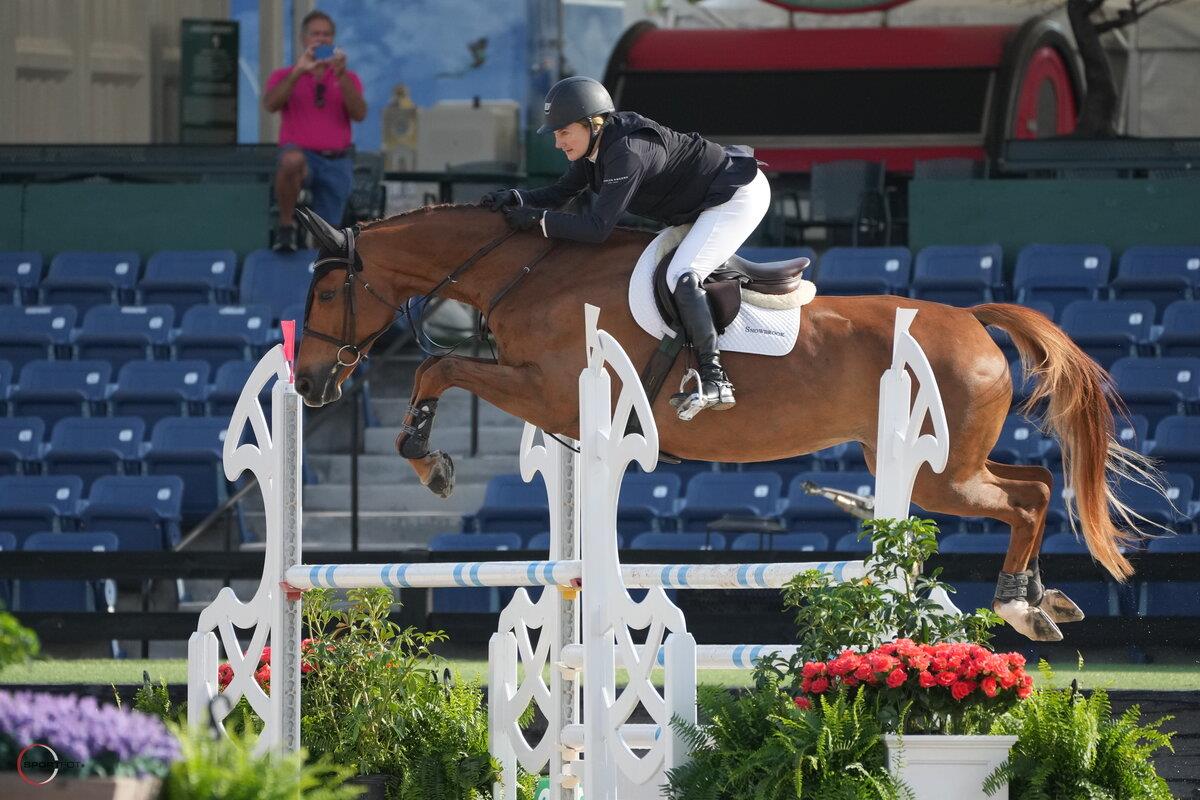The opportunity to spend any part of your life with horses is a gift. To have the chance to experience the feeling of “flying,” as I have heard so many people describe the connection with a horse, is highly addictive and borderline spiritual. This shared experience makes you a part of a passionate and resilient community.
And yes, while we love to fly, almost all of us are certain at some point to fall. It can happen at the walk, when a horse trips or spooks, getting on at a mounting block, on a trail ride, cantering in a ring, or jumping at the highest levels in competition. Most of us who fall will have the good fortune of getting back on and doing it again. But there are no guarantees.

One thing is clear to me as an amateur rider and an industry professional: Accidents happen. We need to take every step we can to protect ourselves, the people we care about, and our community. I was lucky to survive and recover from two serious accidents in the past four years because I have an incredible trainer, Kimberly Prince, who takes safety and recovery seriously. Shortly after my second fall, she suffered a very serious spinal cord injury and is fighting her way back. She is the toughest, bravest person I know and an incredible rider. We all can fall.
Safety is a serious matter, and we owe it to ourselves, our friends, and our families to not only enjoy our horses but also to protect each other and ourselves. Equipment can help protect us. In my case, it’s very clear. My helmet and safety vest—as well as the horse show crews and first responders— saved my life.
So, what happened?
My first fall happened in the jump-off in an Adult Jumper Classic at the Kentucky Horse Park in July 2019. I was one jump away from finishing the jump-off double clear. My horse was a little strong, and the jump came up wrong. He fell, and I fell, resulting in a concussion, broken nose, and bruised, compressed spinal cord. It could have been much worse. I had no memory of anything but entering the ring.
I was back at work in a week, but it took months for me to fully recover. While I did get back on a horse six weeks later, as I had been “cleared,” my trainer and dear friend, Kimberly Prince, was the one to tell me it was too soon. She insisted that I pursue further medical advice, which I did, learning my concussion was more serious than initially diagnosed, and I needed months of physical and cognitive therapy plus a lot of patience. I was ultimately cleared to begin riding again six months after my injury. I am so grateful Kim pushed me to recover appropriately. My judgment was impaired, and I didn’t even realize it.
My second fall happened three years later, in April 2022, in the second round of the Masters Classic at the Winter Equestrian Festival. I had a beautiful clear first round, but in the second round, I took a chance hoping to win, and it didn’t work out. I fell into the B element of the one stride, and my horse jumped over the standards, landing partially on me as she tried desperately to clear the rails and avoid stepping on me.
I broke 14 ribs and had two collapsed lungs, a broken collarbone, and a displaced scapula. Again, I was very lucky. I was wearing an air vest. I would not have been wearing the vest if Kim had not insisted that we all wear vests following jumping athlete Kevin Babington’s accident.
Two surgeries later, the surgeon put me back together. My friends, family, and colleagues were there for me, especially the Lakin family. This was a more painful and slow recovery, but nine months later I was riding again and slowly building back.
From my experiences, I have learned a few things and have six safety tips to live by:
- Never ride without an approved helmet and a safety vest.
- Make sure you don’t ride alone.
- If you fall and hit your head, make sure you are checked out.
- Do not always trust your own judgment that you are OK.
- Take the time you need to recover and get back in the saddle.
- Most importantly, look out for each other.
No question, equestrian sport feels like flying, but we all need to be as prepared as possible for a fall.


